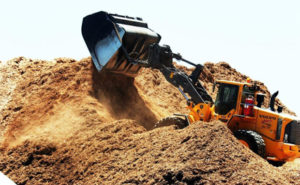Timber companies, environmentalists and airplane manufacturers might seem unlikely bedfellows, but that’s exactly what’s shaping up in Jet City. Source: Puget Sound Business Journal
Fuel from wood waste could soon be fueling Alaska Airlines jets lifting off from Seattle Tacoma International Airport.
A Northwest group is negotiating with contractors to make 1000 gallons of forest-derived biofuel from a 22-ton pile of wood waste near Corvallis, Oregon.
“This is all about taking Northwest forest slash piles, and finding a purpose from them, other than letting them rot,” he said.
“It’s a very detailed and complex project, to get all of the participants lined up to get this to work.”
If it’s successful, the technology could light up a new industry in the Northwest, turning the 10 million tons of wood waste the region generates annually into at much as 400 million gallons of biofuel.
Alaska Airlines, which teamed up with the the Washington State University-led Northwest Advanced Renewables Alliance in early June, is planning a first flight using the waste wood fuel early next year, said Ralph Cavalieri, executive director of the alliance.
The process could bring new life and jobs to a half-dozen shuttered pulp mills in Washington, which could be converted into making aviation biofuels relatively easily.
The innovation has come to light just as the Environmental Protection Agency in mid-June announced it was creating new regulations to reduce aircraft CO2 emissions.
The EPA is partly acting in response to similar rule making underway at the International Civil Aviation Organization, a unit of the United Nations, to create global standards. Those new standards will push airlines toward use of more biofuels.
Wood waste is the material of choice for the Northwest because it’s generated as a by-product of logging – which is already a big industry here – and because it doesn’t compete with food production, Cavalieri said.
An axiom of the industry is that the stock for such fuels must originate near where it will be used.
Pulp mills are already built to perform some of the necessary early steps in making biofuels from wood waste, which could be pivotal for this region, Cavalieri said.
Mills grind up pulp, and then separate the glue-like lignin from the cellulose. Companies once made paper from the cellulose.
Now, they will be able to make biofuel fuel from it, which is later mixed with petroleumbased jet fuel.
“Studies show there is enough forest residue in the Northwest to meet the need of all jet aircraft that fuel up in our region,” Cavalieri said.
“The most preferable is to get to a pulp mill before it’s torn down, because there are truly modest modifications to get where we have to be.”








